- Kanerjing is the earliest water conservancy project to develop and utilize groundwater in arid areas
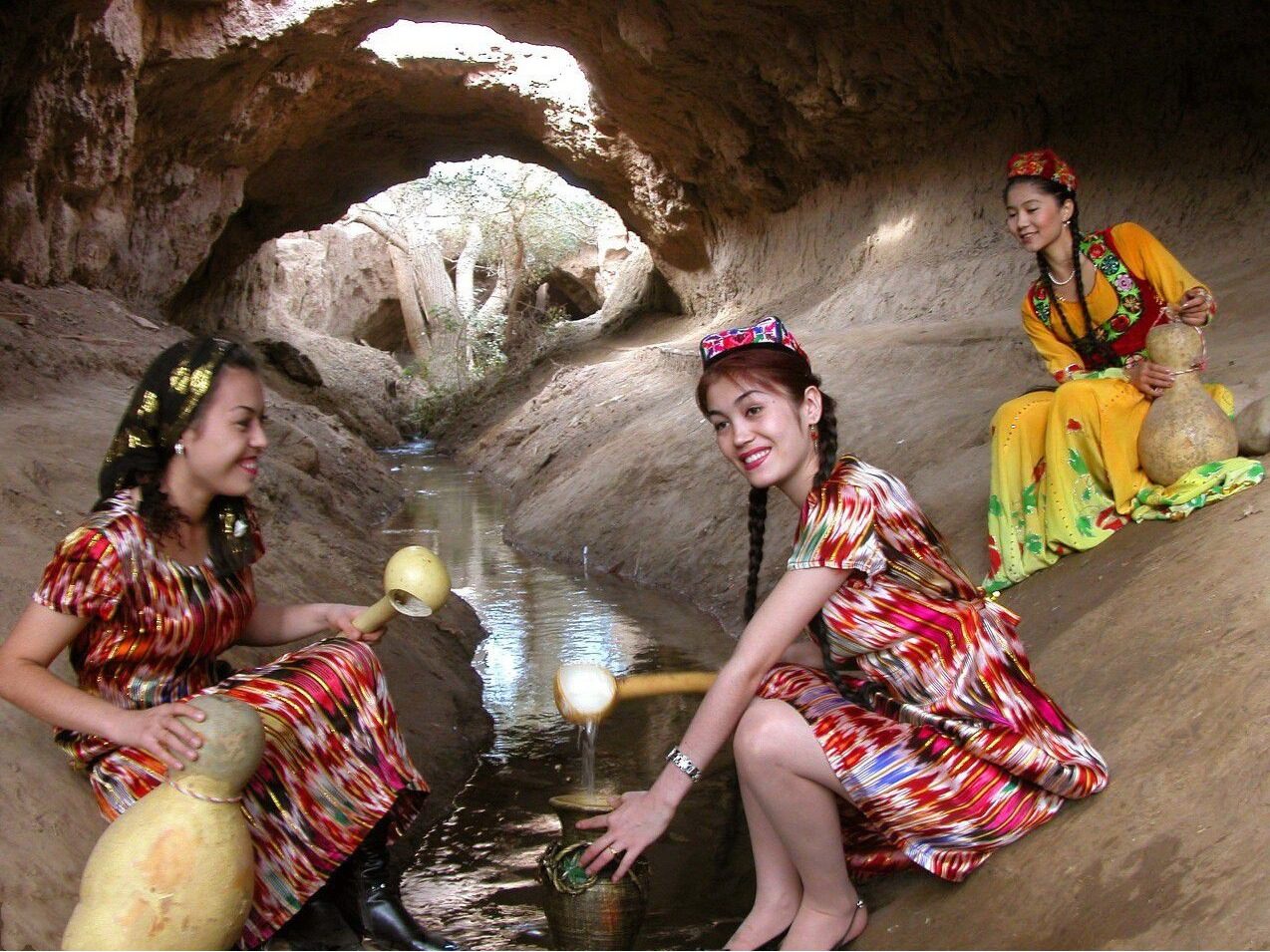
There are many great inventions in Chinese history, but only those that are beneficial to the people can be passed down. Among them are the Karez in Xinjiang. As we all know, in ancient China, farming civilization was the mainstay, and water conservancy was the lifeblood of agriculture. Before the arrival of the mechanization era, agriculture was completely dependent on the sky. Therefore, only the areas within the 400 mm rainfall line were the most developed areas of agricultural civilization, that is, the Central Plains area in ancient times. Even at the end of the Qing Dynasty, Xinjiang, Tibet, Inner Mongolia, Heilongjiang and other places beyond the 400 mm rainfall line were still in bitter cold areas and few people lived.
Build reason
The Turpan area in eastern Xinjiang is located in one of the four major basins in China. Although it belongs to the ancient Western Regions, it is also a good place for outstanding people. Beginning in the Han Dynasty, Turpan was an indispensable and contended place when the Huns, Rouran, Khitan and other ethnic minorities moved westward. As a result, it became an important hub for the Central Plains dynasty. As early as the first year of the Yuan Dynasty (48 BC), the Han Dynasty set up the Wuji Xiaowei Mansion here. Now that there are soldiers, food is needed, and building water conservancy projects and developing farmland has become a top priority. The reason for the local farming was because the food was lost during the transportation process. No dynasty could bear the heavy burden of transporting large quantities of food from the Central Plains to Turpan for a long time.
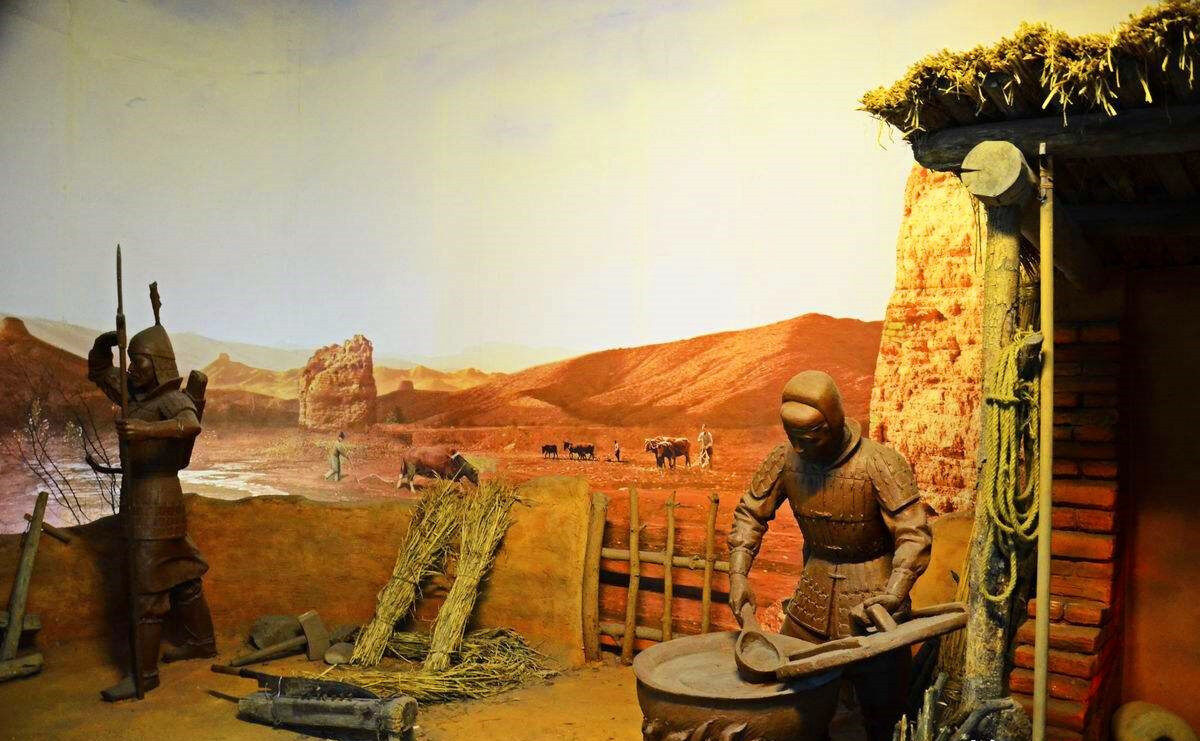
Han Dynasty army stationing and guarding the border scene
Relying on the oasis, small-scale ancient cities, such as Jiaohe Ancient City and Gaochang Ancient City, were first established here. However, to develop a culturally splendid and large-scale ancient city, the locals rely not only on the gift of nature, but also their own wisdom-Kanerjing. Karez is the earliest water conservancy project to develop and utilize groundwater in arid areas. It is the crystallization of the wisdom of the ancient working people. Its magical orientation and structure can preserve precious water sources to the greatest extent and provide enough irrigation and domestic water for people in arid areas.

Western Region Ancient City Scene Restoration Model
There are three main theories about the origin of Kanerjing. The first view is that it came from Central Asia and was introduced into the Xinjiang region from the Persian Empire. To this day, the Iranian region is still the place with the longest use and the largest number of Karez in the world; the second view is that it comes from China In the interior, the famous modern scholar Wang Guowei believed that it originated in wells. The "Historical Records of Dawan Biography" once recorded that locals came to the Central Plains to find "Qin people" and learned the technique of piercing wells, thus solving the problem of water interruption in the city; The third view is that this is the invention and creation of local ancestors.
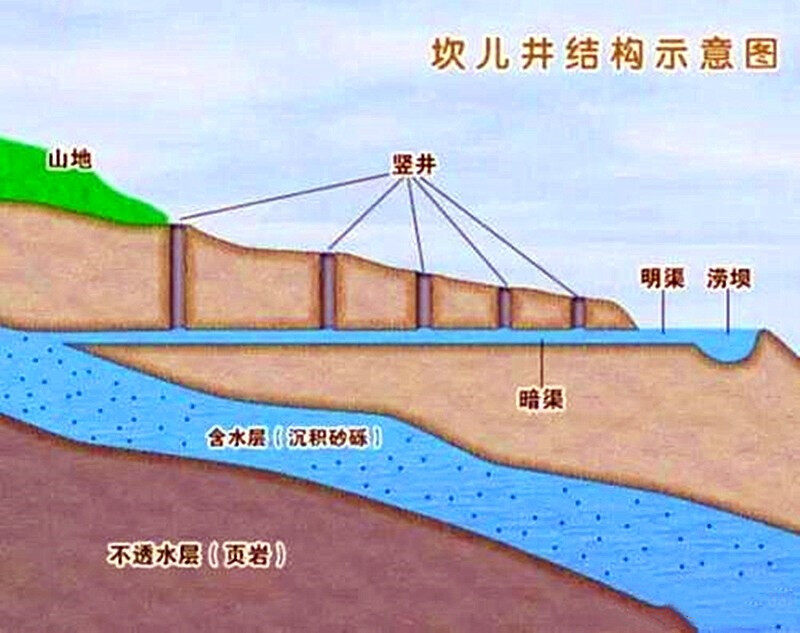
Schematic diagram of Kanerjing structure
Although the academic circle is still inconclusive, the third claim is still more popular because of the discovery of rock paintings carved with Kanerjing in Xinjiang. These paintings are at least 4000-6000 years old, regardless of whether they were introduced from Central Asia. It is still taught by the people of the Central Plains, and it can't explain why the figure of Kanerjing appeared in the rock paintings so far away from this year.
Karez structure
The standard karez is generally composed of a shaft and a culvert. The shaft is used for positioning, access and ventilation. The soil taken during excavation will form a ring mound around it to prevent ground water from infiltrating; the depth of the shaft and the location of the quarry Depending on the location, the downstream area generally only needs to be about 10 meters deep, and the upstream area may need to be as deep as 100 meters.
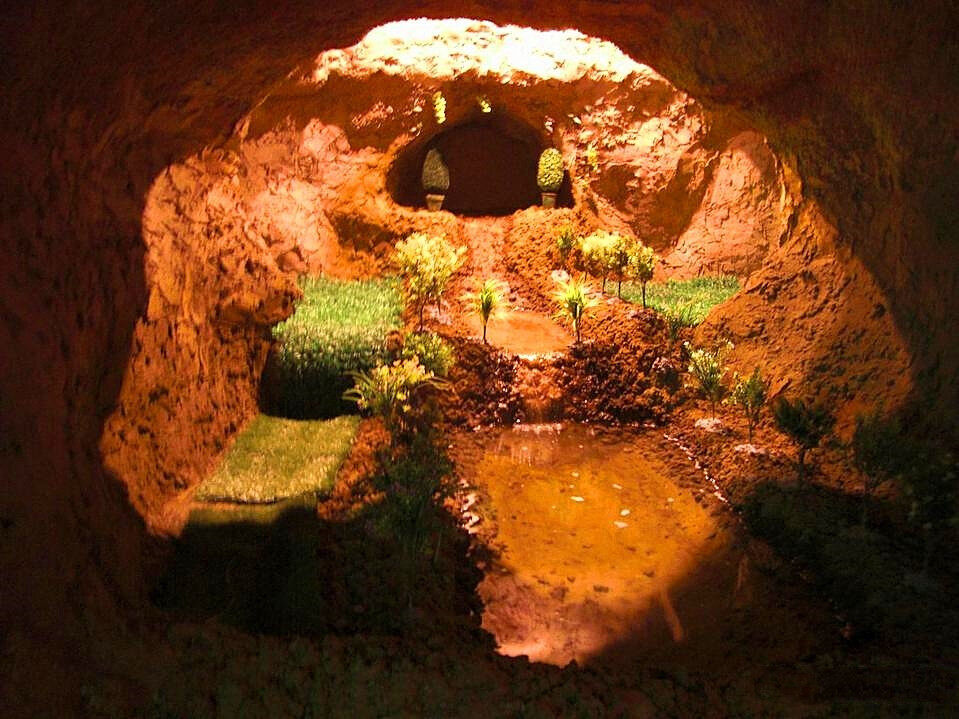
Inside Karez
Concealed channels are also called water conveyance corridors. There are catchment sections and open channel sections. Generally, the width and height of the culvert can only allow one person to enter sideways, and the length varies according to the water depth, soil quality and other factors. Generally, it is 3 to 5 kilometers. The longest may exceed 10 kilometers. Most of the Karez wells located underground have reduced the evaporation of water to the greatest extent. In the era when there was no scientific knowledge, the wisdom of the ancestors to construct such a complex water conservancy project only through practice can be seen.
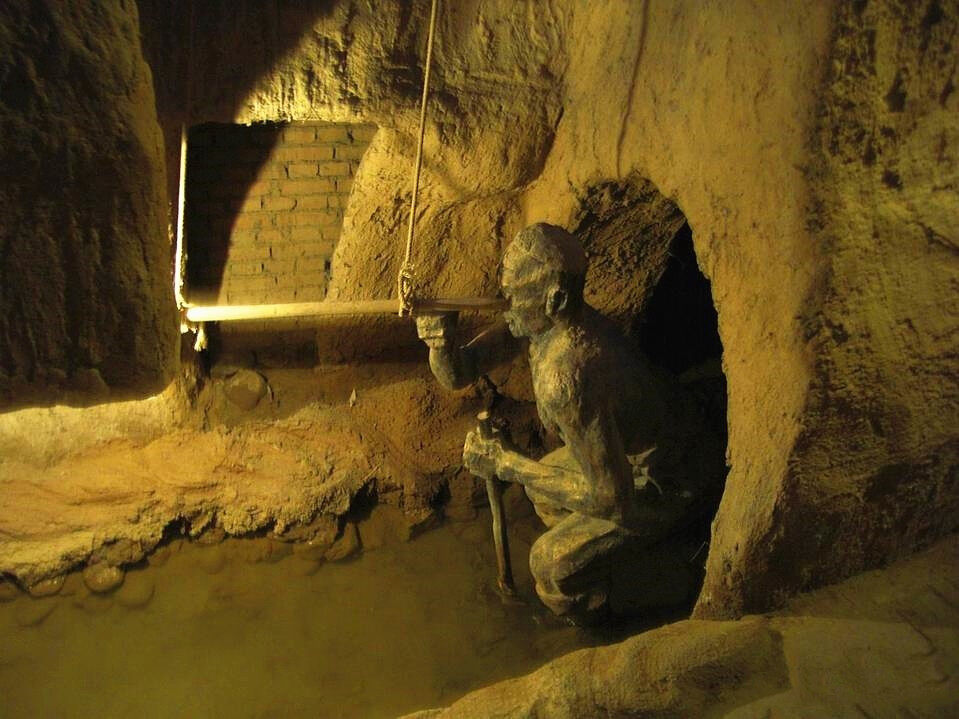
Build a statue of the Kanerjing scene
Karez is very common in the arid areas of Xinjiang and is an important guarantee for local agriculture. Of course, building a kanerjing also requires a lot of manpower and material resources, and the number of thousands of them is not small. However, the kanerjing has actually benefited the people and benefited the local people in Xinjiang for thousands of years. From this point of view, the Great Wall, which was built at a huge cost in the past dynasties, is certainly able to withstand the attacks of certain ethnic minorities, and it is also very spectacular. It seems to have considerable historical significance and ornamental value today. But from the practical point of view of benefiting the people, Kanerjing is a greater existence than the Great Wall.
In the late 1950s, the number of kaner wells reached the highest peak. At that time, there were 1,784 kaner wells of various sizes in Xinjiang, and the irrigated area could reach 24,200 hectares. However, due to the rapid deterioration of the ecological environment, coupled with the continuous increase in population and the growing area of arable land, water resources have been consumed in large quantities, many karezes were forced to be abandoned, and the number of karezes that can still be used has been significantly reduced. Take the Turpan area, which accounts for 70% of the kaner wells in Xinjiang, as an example. From 1957 to 2014, the number of kaner wells decreased by 1,023, and an average of 18 kaner wells disappear every year, and they can no longer perform their original functions.
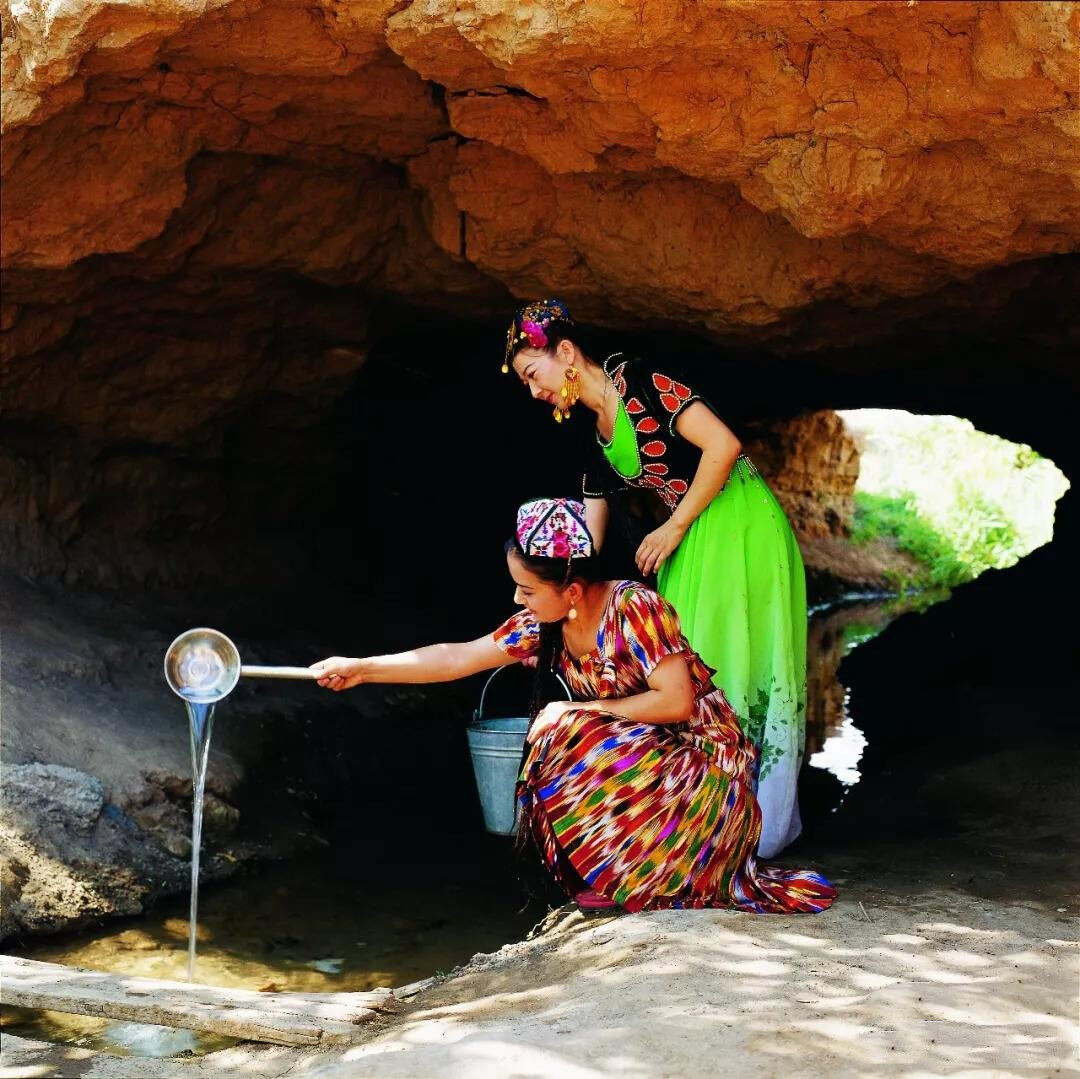
Uyghur girl fetching water from Kanerjing
The disappearance of the Kanerjing led to the continuous decline of the local shallow groundwater level, irreversible changes in the soil structure, a large increase in the area of local desertification, and a significant decrease in biodiversity. These abandoned karez is also a cultural loss. It is not only a material heritage of water conservancy, but also has considerable historical and cultural value. For the people of Xinjiang, especially Turpan, Kanerjing has the same status as the "mother river" and is an important part of the traditional well canal culture of the Chinese nation. On the other hand, Kanerjing has also witnessed the prosperity and development of oasis, and is a milestone in water conservancy and oasis agriculture. Now Kanerjing also has rare tourist value, attracting Chinese and foreign tourists to visit and pay respects.
At present, the oldest Kanerjing in Xinjiang is 473 years old, and the daily water output can still irrigate 20 acres of land; the longest Kanerjing is a full 25 kilometers, and the deepest one is 98 meters deep and 20.7 kilometers long. These large and small karez wells are still playing their role in agricultural modernization. As water conservancy engineering facilities with minimal damage to the environment, they guard Xinjiang's agriculture and oasis. The so-called predecessors planted trees and future generations took advantage of the shade. The Kanerjing invention not only feeds more people in Xinjiang, but also brings considerable tourism income, and also adds a beautiful touch to China's cultural landscape. Therefore, it is our unshirkable responsibility to protect the karez that is about to disappear. Editor/He Yuting
Comment
 Praise
Praise
 Collect
Collect
 Comment
Comment
 Search
Search


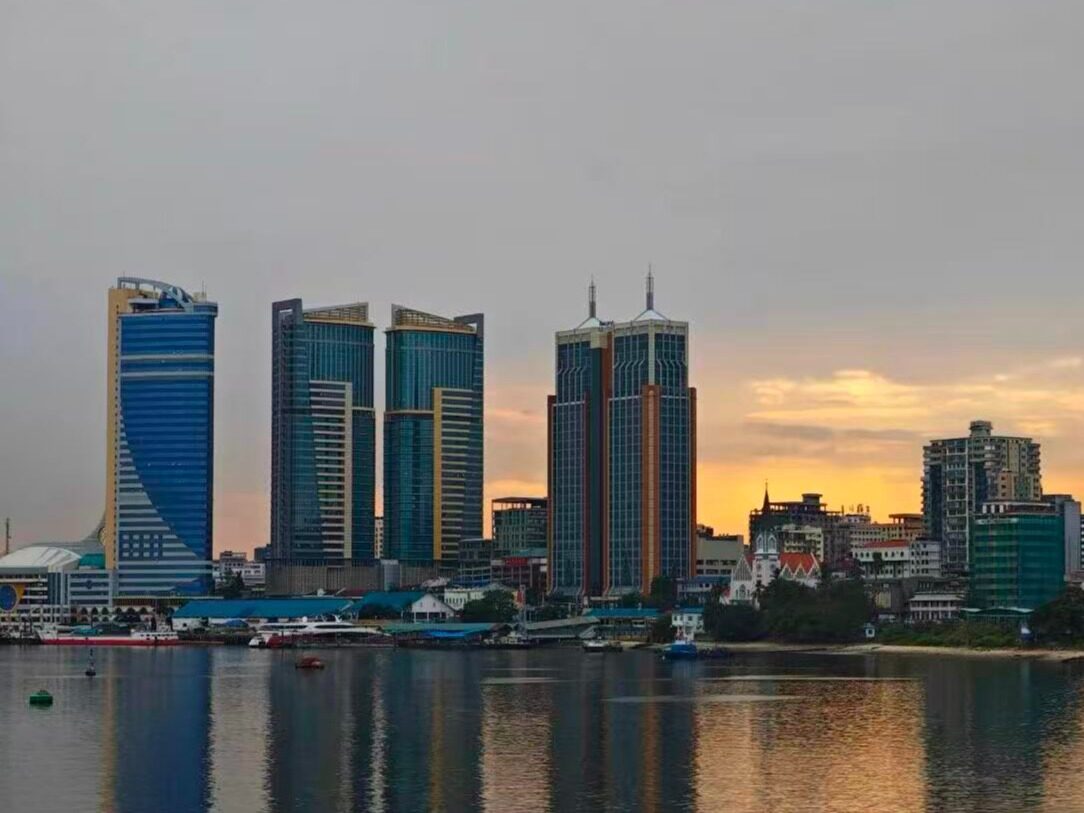
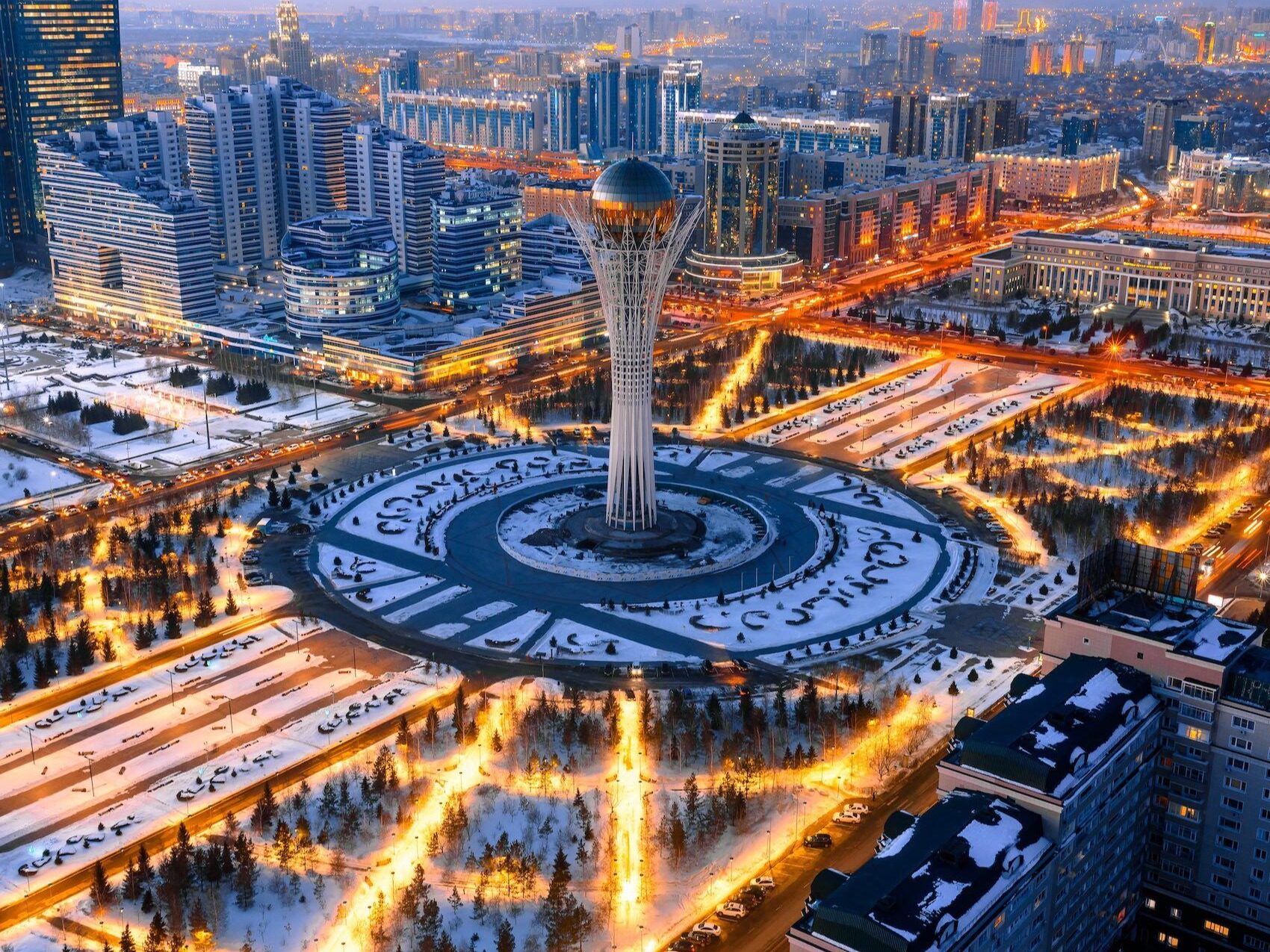










Write something~